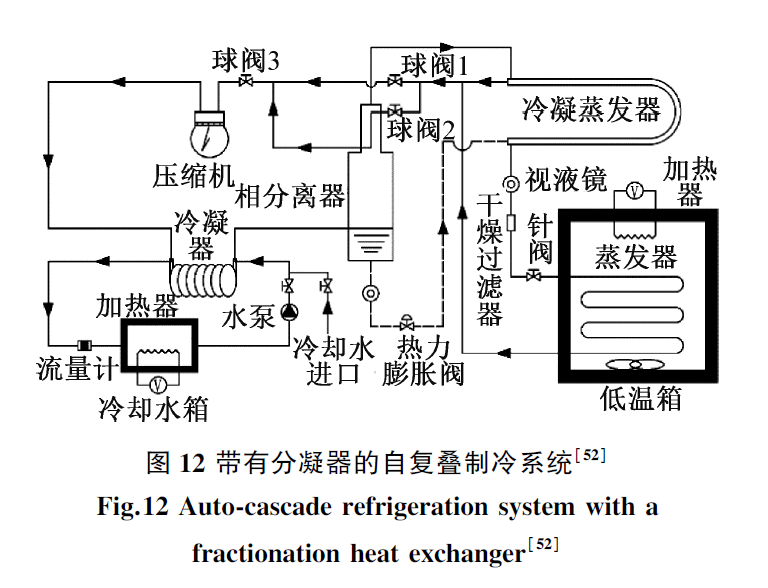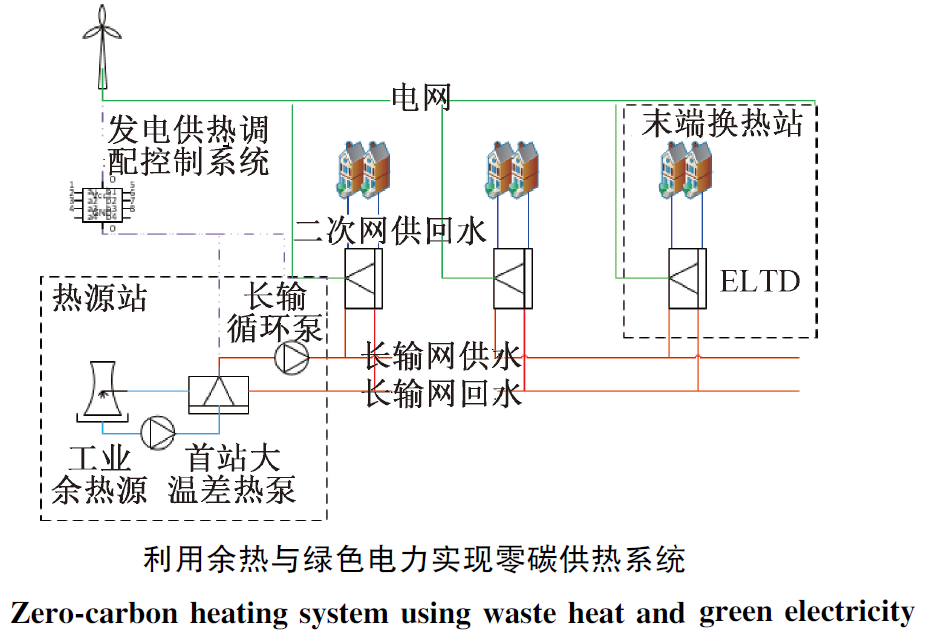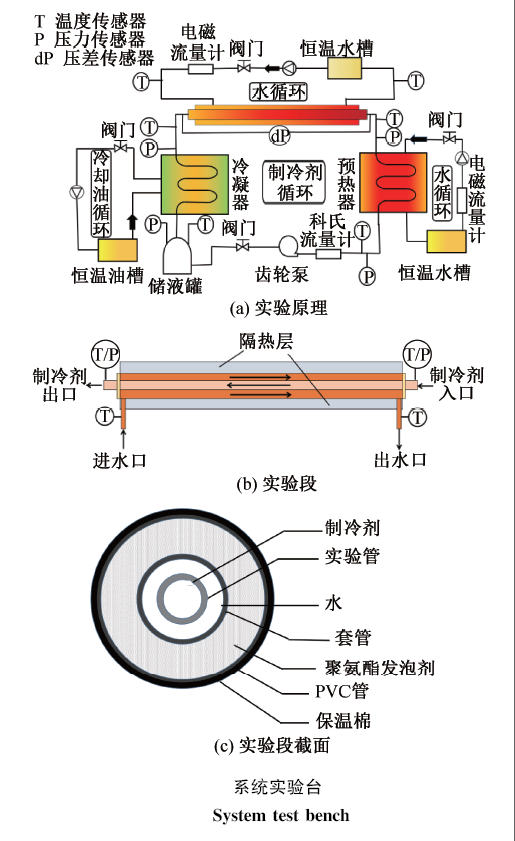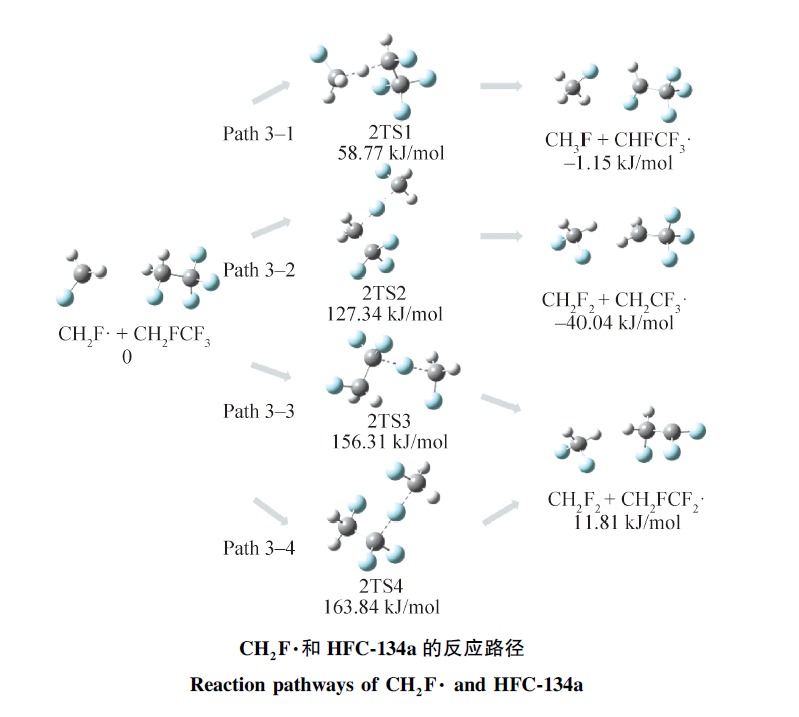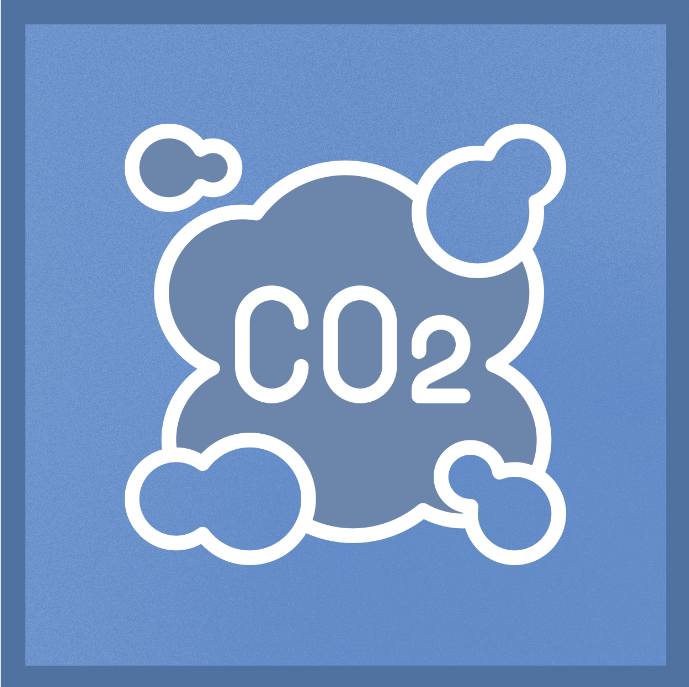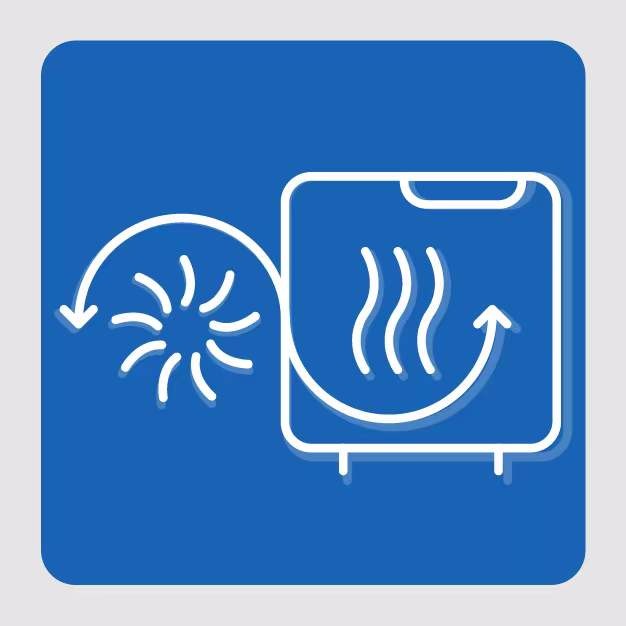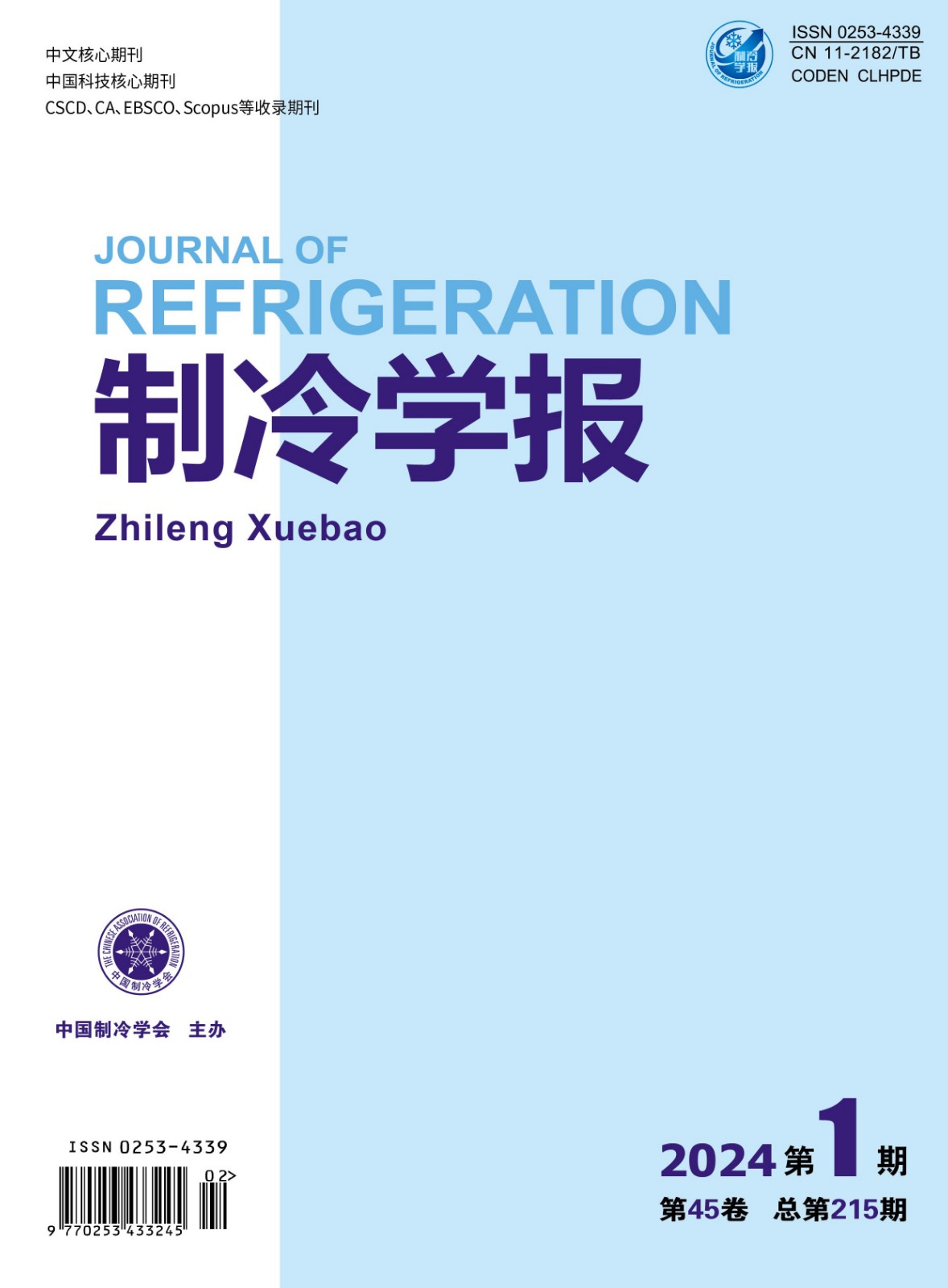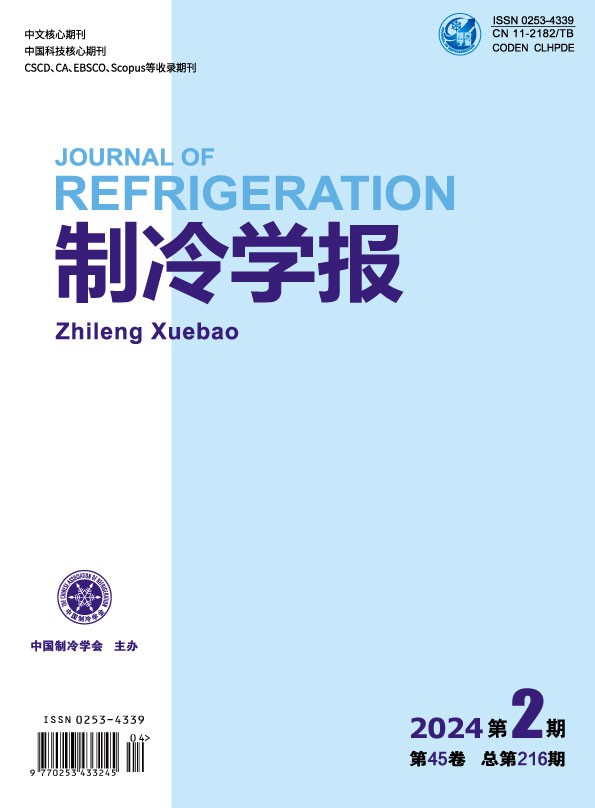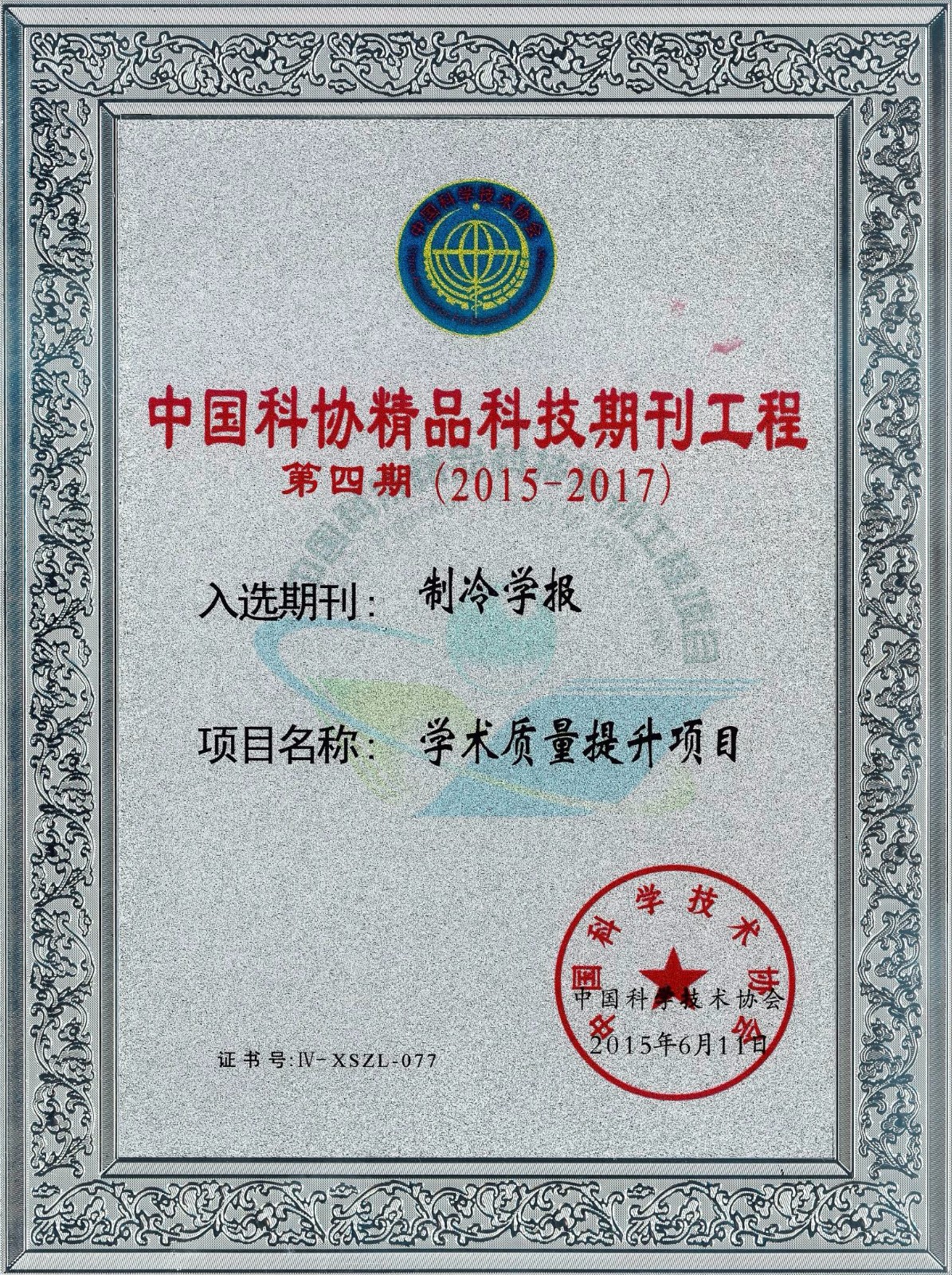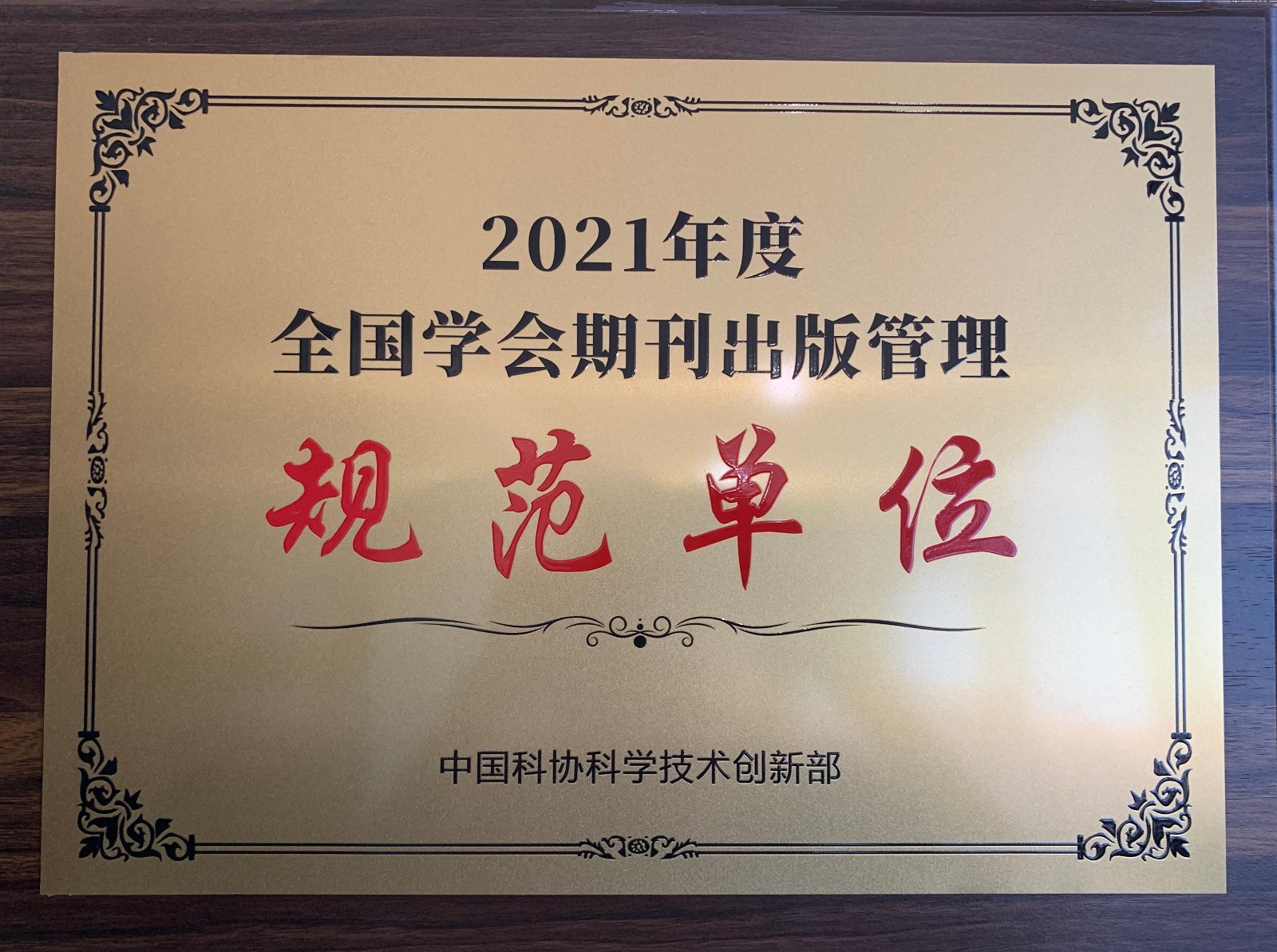Abstract>The heat pump technology can upgrade and enhance the quality of low-grade waste heat in production and daily life. Zeotropic mixtures can achieve temperature matching during the heat exchange process of heat pump cycles, which realize the deep utilization of waste heat resources. This study conducts experimental analysis on CO2/R1234yf, CO2/R290, CO2/R600a, and CO2/R32 zeotropic mixture based on a water source heat pump experimental system. The performance of heat pumps with evaporators and condensers simultaneously meeting high temperature differences is explored by using the zeotropic mixture. The results indicate that the charge amount of zeotropic mixture primarily affects the degree of cycle subcooling, thereby influencing the system's COP (Coefficient of Performance). When the mass composition of CO2/R1234yf is 15/85%, there is an optimal refrigerant charge, the optimal charge corresponds to a COP of 7.66 under the experimental condition (heat source inlet water temperature at 25°C, outlet at 5°C; heat sink inlet water temperature at 15°C, outlet at 45°C). Furthermore, compared to the pure R290, the CO2/R290 working fluid pair exhibits an enhancement of 75.2% in the optimal coefficient of performance (COP), with a corresponding increase of 107.7% in the heating capacity per unit of volume (qv). Similarly, the CO2/R1234yf working fluid pair demonstrates an improvement of 27.7% in the optimal COP and an increase of 92.0% in qv. The CO2/R32 working fluid pair shows a 15.0% increase in the optimal COP. However, the CO2/R600a working fluid pair only exhibits a 1.7% enhancement in the optimal COP, indicating a relatively lower application potential.
Abstract>The drying process of heat pump clothes dryer (HPCD) has complex characteristics for strong coupling (the thermal cycle of the refrigerant side is coupled with the drying cycle of the air side), time-varying (the system operating parameters change with drying time), and integration (limited space integrating evaporator, condenser, fan, compressor, etc.), which brings great difficulty to theoretical analysis of drying performance of HPCD. Based on certain simplifications, this paper analyzes the effects of different compressor capacities and fan airflows on the moisture extraction rate per unit time (MER) and moisture extraction rate per energy consumption (SMER) of the HPCD. The study found that under the same airflow, the condenser discharge air temperature within the analysis range of 20 to 80 degrees, the evaporator discharge air temperature within the analysis range of 10 to 50degrees, the SMER increases first and then decreases with the condenser discharge air temperature and evaporator discharge air temperature, and for the HPCD analyzed in this paper, when drying half load 5kg clothes, by theoretical calculation, there is an optimal condenser discharge air temperature 53 degrees and evaporator discharge air temperature 27degrees that maximizes the SMER of the HPCD, and the optimal evaporator discharge and condenser discharge air temperature is related to the COP of heat pump system and the mass and heat transfer capacity of air with clothes. Under the same evaporator discharge and condenser discharge temperatures, the airflow within the analysis range of 0.02~0.08kg/s, the SMER first increases and then decreases with the airflow, and there is an optimal working airflow 0.047kg/s that maximizes the SMER of the HPCD, and the optimal airflow is related to the drum power and the clothes dryer airflow resistance characteristic; And according to methods for measuring the performance of tumble dryers for household use, through testing, it was verified that the theoretical analysis results were consistent with the experimental tests. The research method and conclusion can provide theoretical guidance for the design and optimization of HPCD.
Abstract>HP-1 is an eco-friendly HFOs refrigerant known for its favorable thermodynamic properties and environmental attributes. Its critical parameters and saturated vapor pressure are close to those of R245fa. It has the potential to replace R245fa, which has a high global warming potential (GWP), in high-temperature heat pumps. The the flammability, solubility, and material compatibility of HP-1 were mainly developed by expriment. The results indicated that HP-1 had a flammability range of 9.75% to 16.1%, exhibited excellent solubility with MK220 lubricating oil at elevated temperatures, and good compatibility with materials used in high-temperature heat pump systems. When HP-1 is applied to high-temperature heat pump units, the condensing temperature of the unit can reach up to 125°C when the evaporating temperature is between 50-70°C, with a heating capacity of 99.27kW to 153.14kW, and a coefficient of performance (COP) of 2.25 to 4.85.
Abstract>The transcritical CO2 heat pump air-conditioning system has a good low-temperature heating capacity, and the dynamic parameter changes during its operation have a significant impact on the thermal comfort of the passenger cabin. In order to study the comfort of the passenger compartment and the coupling law of the dynamic changes of the parameters of the transcritical CO2 heat pump air conditioning system, a joint simulation model was built based on the one-dimensional simulation software GT-Suite and the three-dimensional CFD software STAR-CCM+ to study the three-dimensional model of the vehicle air-conditioning system in the passenger compartment. The three-dimensional cabin model can provide accurate real-time state parameters of supply air and return air for the one-dimensional simulation system of heat pump air conditioners. The results show that the temperature distribution of the thermal environment of the passenger compartment is relatively non-uniform, and it is necessary to use the weighted PMV (Predicted Mean Vote) to evaluate the non-uniform thermal environment of the passenger compartment. In the multi-PID control transcritical CO2 automobile heat pump air conditioning system, the control method based on the weighted PMV comfort model can keep the regulation and stability of the system target parameters. Under the ambient temperature condition of 43 °C in the cooling mode, the control method can reduce the power consumption of the compressor by more than 9%. In the heating mode -10 ℃ ambient temperature condition, this method can reduce the power consumption of the compressor by more than 18%. This control method can reduce the power consumption of the system compressor under the premise of meeting the comfort requirements, which is a very effective Energy saving control scheme.
Abstract>The displacer-type pulse tube cryocooler employs a displacer for phase adjustment and the recovery of acoustic power, resulting in the potential for high refrigeration efficiency. Currently, there is a lack of research on highly-efficient displacer-type pulse tube cryocoolers with large cooling capacity around -100 ℃. In this paper, we present the design of a hundred-watt displacer-type pulse tube cryocooler applied in low-temperature freezers and experimentally assess its performance, with a particular focus on displacer motion and compressor efficiency. Based on a validated numerical model, we analyze the coupling relationship between the pulse tube and the compressor, as well as the internal phase relationship of the cold finger. It is observed that, when operating with a charging pressure of 3.0 MPa, a frequency of 64.9 Hz, a cooling water temperature of 20 ℃, and an input electrical power of 500 W, the displacer-type pulse tube cryocooler can provide 160.3 W of cooling capacity at -100 ℃, achieving a relative Carnot efficiency of 22.2 %. Meanwhile, the displacer leads the compressor by 59 °, the internal phase distribution of the pulse tube is deemed to be rational, and the coupling between the compressor and the cold finger exhibits a satisfying compressor efficiency of 78 %. This cryocooler stands as the most efficient displacer-type pulse tube cryocooler around -100 ℃.
Abstract>The commonly used dimethyl sulfoxide (Me2SO) in cell banking exhibits significant side effects on both cells and the human body. Therefore, there is an urgent need for an approach to mitigate the side effects of Me2SO while with comparable efficacy. The study uses human umbilical cord mesenchymal stem cells as the research material. First, the thermal physical properties of trehalose, glucose and L-proline and their regulation of ice crystal growth were measured by a differential scanning calorimeter and a cryomicroscope. Further, cryopreservation experiments were performed to determine the optimal concentrations of each component in the cryopservation solution, and the viability and functionality of cells after cryopreservation were validated. Results show that there is no significant difference in cell viability (92.42 ± 0.28%) and recovery rate (87.80 ± 4.22%) between the use of the novel stem cell cryopreservation solution (1.25 mol/L ethylene glycol + 1.0% whey protein + 0.1 mol/L trehalose + Normosol-R) and conventional cryopreservation solution (10%Me2SO). Moreover, the novel stem cell cryopservation solution better preserves the proliferative capacity and stemness of stem cells. The proposed novel stem cell cryopservation solution addresses the "Me2SO-free" issue in cell cryopreservation, holding promising potential for clinical applications.
Abstract>Capillary mat heat exchangers are increasingly used in transportation energy tunnels due to their large heat transfer area, uniform temperature, etc. Thermal energy tunnel, as a new type of energy tunnel, is different from transportation energy tunnels due to its internal heat source. To examine the feasibility of applying capillary mat heat exchangers in thermal energy tunnels, heat transfer performances of them are experimentally investigated in a thermal energy tunnel using 1:1 intermittent operating mode. The results show that the higher the initial air temperature (T0) in the tunnel is, the greater is the heat transfer rate per mat area (q). As the T0 increases by 10°C, the q increases by 45.9%. The q increases with the increase of circulating water velocity (u), presenting an exponential change. When u increases up to 0.1m/s, the q tends to be stable. The lower the inlet temperature of circulating water (tin) is, the greater is the q. During the heat transfer process, the q reaches 143.09W/m2~187.22W/m2, which is much higher than that of transportation energy tunnels. The results can provide a basis for the design and application of capillary mat heat exchangers in energy tunnels with internal heat sources.
Abstract>As the power density of lithium-ion batteries steadily advances and high-power fast charging technologies evolve, the design of battery thermal management systems has emerged as a pivotal and challenging area of research. This study introduces a direct cooling thermal management system for multi-box battery packs, utilizing roll-bond cold plates,and conducts experimental research on the system's performance under different operating conditions. The experimental results show that at a charging rate of 0.5 C and a compressor speed of 2400 r/min, the system's average Coefficient of Performance (COP) can reach 5.83, the cold plate's maximum dimensionless loss coefficient is 6.27%, and the maximum temperature difference between cold plates is 1.90 °C. Notably, the temperature difference between the plates escalates with an increase in compressor speed and the cold plate's thermal load, peaking at 3.99 °C during the tests. Concurrently, the system's COP exhibits a decreasing trend with the acceleration of the compressor, achieving a maximum of 7.41 throughout the duration of the experiments.
Abstract>To reduce greenhouse gas emissions and improve the performance of space heating system, a transcritical CO2 heat pump heating system based on ejector and integrated mechanical subcooling (EJ-IMS) is proposed. A thermodynamic model of the system is developed with COP (coefficient of performance) as the objective function, then the subcooling degree and discharge pressure is optimized. The winter heating performance of the system located in typical cities of different climate zones is evaluated. The results show that the EJ-IMS system has the maximum COP, optimum subcooling degree and discharge pressure. The optimum subcooling degree is 26.44~39.21% lower than the integrated mechanical subcooling system (IMS), while the optimum discharge pressure of the EJ-IMS system is 0.27~9.37% lower than the baseline system (BASE) and ejector system (EJ). The COP and exergy efficiency of the EJ-IMS system are 6.09~37.74% and 6.75~46.02% higher than the above 3 conventional systems. The heating seasonal performance factor (HSPF) of the EJ-IMS system is 6.89~29.61% higher compared with the 3 systems, which is more suitable to be used in cold regions. This study can provide theoretical references for the construction of efficient CO2 space heating systems.
Abstract>Heat pump technology is an energy-saving technology that can effectively combat global warming and reduce carbon emissions. Industrial heat pumps recover waste heat from the heating process, heat water or air, and reduce electricity consumption and carbon emissions. Industrial heat pumps are energy-saving, environmentally friendly, and provide stable heating. They have been widely used in all stages of production and life. This article analyzes the compressor types and characteristics of domestic and foreign industrial waste heat high-temperature heat pumps. Focusing on medium and large capacity twin-screw compressors and centrifugal compressors, the research status is analyzed, and the possible development direction of medium and large capacity high-temperature heat pumps is given.


